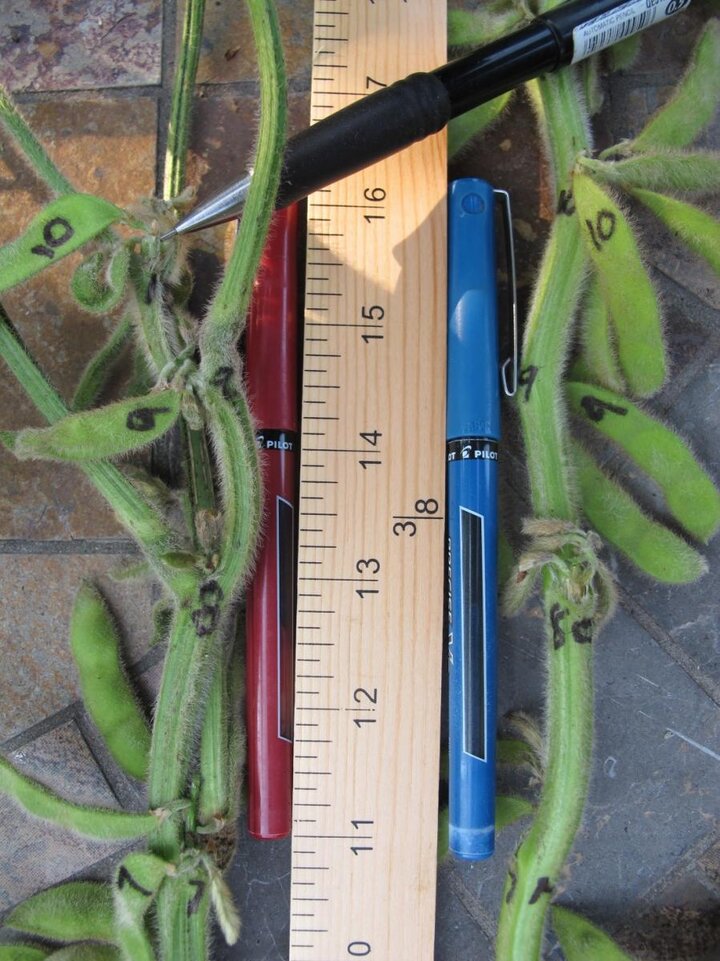The forensic analysis described here and in a previous CropWatch article assumes the 3.7-day soybean node accrual upon V1 continues despite effects from off-target dicamba exposure. To test this we compared the same soybean variety in an Xtend and non-Xtend version with off-target dicamba damage occurring to the non-Xtend variety. We used the Eastern Nebraska Research and Extension Center (ENREC) plot mentioned in this article where the off-target dicamba most likely occurred from dicamba application to a nearby corn field.
Question: Do soybean plants continue to produce a new node every 3.7 days after being affected by off-target dicamba?
Answer: Yes, as long as the main stem tip where new nodes accrue is not killed. We showed in this case study example (Figure 1) that both the non-Xtend variety affected by off-target dicamba and the Xtend variety that wasn’t affected had the same number of nodes. This answers a significant question to aid in off-target dicamba forensic analysis.
This same node accrual occurred despite the non-Xtend variety being shorter and having reduced leaf area compared to the Xtend variety. The shortened height is due to shorter internodes. Because dicamba impacts cell division, it not only affects cell division of the new nodal leaflets developing at the main stem apical meristem, but can also impact cell division between nodal leaflets, shortening the internode length (Figure 1).
However, when the main stem apical meristem is killed, node production on the main stem ceases (Figure 2). The resulting loss of apical dominance will lead to those no-stem-tip plants generating branches at the lower main stem nodes. The new nodal leaflets generated on those branches will gradually result in canopy closure, but the canopy height will be substantively shorter than normal. Eventually, the elongating branches and their leaflets will cover dead main stem tips, such that you will not see the dead tips unless you purposely peer into that canopy.



